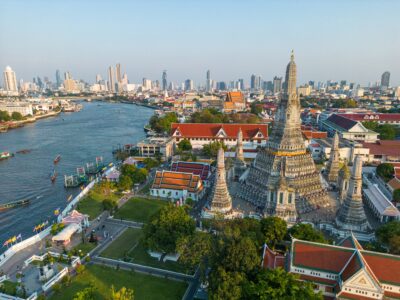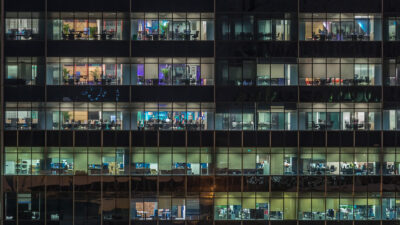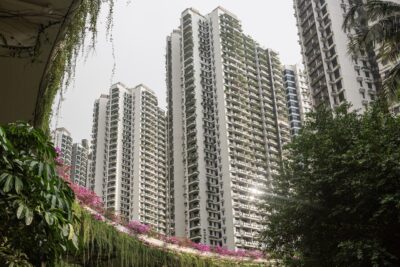The human touch

Moshe Safdie talks about designing for high-density cities and the future of urban planning
A self-described modernist, Israeli-Canadian-American architect, urban planner, author and educator Moshe Safdie has been creating iconic designs for nearly five decades. Since founding the prestigious Safdie Architects in 1964, Safdie has pioneered a design concept that enhances the community by highlighting the locale’s culture and embracing the essence of nature.
Here, he talks about his vision and how his contemporary designs have achieved the goal of ‘humanising the mega-scale’ especially in the world’s most densely-populated urban areas.
Could you explain philosophy behind ‘humanising the mega-scale’ projects in urban locations?
As we build greater and greater densities—which means building tall towers, and in many cities, these are being built closer together, both residential and mixed-use office—one can observe that the quality of the environment is rapidly deteriorating. This is a result of density and the haphazard way in which tall towers are designed and clustered. I think one has to begin by recognising the feeling of contact with nature, exposure to light and view in the apartments or offices or workspace, and getting these buildings to be organised in a way where the public realm is not compromised: on the street level or various levels there are public spaces, including outdoor spaces, and the creation of gardens, both private and public, at various levels of the building. These are the many strategies and in order to achieve that, we need to start designing buildings which are designed towards achieving maximum light penetration, minimum blocking of buildings next to each other, and maximising the outdoors. This can be done at the communal level, like I did at the Marina Bay Sands. It can be done at the private level of residences like I did at Habitat 67 [in Montreal, Canada>, and like what I’m doing now in several projects in Asia, like Sky Habitat in Singapore, or the project we’re building in Quinhangdao, demonstrating that you can achieve much more openness, more more air, much more light, much more nature and gardens and plant life, than would the, sort of, traditional crowding up of towers as is so much the custom today.
You discussed the leaning tower that you designed in Colombo, Sri Lanka. Could you tell us how that design ‘humanises’ the project?
[The Altair> is a 65-storey residential tower, which is very tall for Colombo, because the surrounding towers are around 30 storeys. It has a magnificent view of the sea and it’s abutting a lake. It has everything going for it in terms of design. We created a base, which is lined with shops, in order to make, so to speak, a “soft landing” as it slides toward the streets and the neighbourhood, so that along the lake, it creates a promenade with several restaurants and shops, which make for a pleasant street. That’s designed a leaning tower because by structuring the tower at an angle, I was able to give outdoor gardens to all the apartments along that slot, so that all these apartments have actually not balconies, but garden-terraces, which are open to the sky, all the way to the top of the building. So these would be more like how penthouses are in a traditional apartment. And both at the podium level and within the structure are very generous outdoor, open to the sky and landscaped spaces for the residents with swimming pools and gardens. There are community spaces which are connected with nature.
You also mentioned the Marina Bay Sands project in Singapore. Please tell us more about that.
At the Marina Bay Sands, similarly, there are several levels of outdoor spaces open to the public, [like the> bayfront promenade. The fifth level podium roof is completely public, both serving the people who live in the project as well as the public at-large. The tighter the density, the more [it is> of a challenge, and doing something in downtown Singapore or Hong Kong is much more difficult than doing something in downtown Colombo.
Do you think that your design philosophy would be available for more affordable buildings in the future?
The project that we are doing in Tsung Tsin—which is much denser than Colombo—consists of eight towers, mixed-use, mostly residential and hotel and offices [where> we again demonstrate some of the strategies. The towers are arranged in such a way that most of the apartments face south, and the buildings are inclined, as they are in Colombo but not quite the same way, to form south-facing terraces as well as some north-facing terraces. The whole roof of the top podium is a public park, [which is> very large in scale. There’s a conservatory within the building with community spaces in it.
These strategies, in one form or another, apply to anything we do at that range of densities.
What is the future of urban planning, especially in densely populated cities? Will there be a conflict between modernism and sustainable architecture?
Planning, particularly physical planning and urban design, have been discredited in recent decades in North America, as well as in many other worldwide locations. This has been, in part, due to the ‘market knows best’ mood in which the general culture and economy were functioning. The urban design initiatives of trying to plan districts in any systematic way, commonplace in the United States in the 70’s and early 80’s, are almost nonexistent today. A notable exception is Singapore, where the Urban Redevelopment Authority has initiated district plans and design guidelines affecting most land being marketed publicly. In China, there is a mixed situation, with planning initiatives in certain locales and pretty open-ended development in others.
The challenge over the next decade is to re-establish the credibility of urban design and district plans in which the overall developments by several developers and architects coalesce into a whole—in which the whole is greater than the parts. This involves master plans which determine massing, access, road and pedestrian systems, which are then imposed on individual developments. Without this a cacophony of current development will continue. District planning ought to occur, including urban design guidelines, even when the land is privately owned. In other words, preempt zoning by expanding the zoning requirements into 3D guidelines of development.
I see no conflict between modernism and sustainability. Modernism and its essence was a movement with a social conscience and social responsibility. Sustainability today is but an extension of these ideas into a world in which resources and energy are scarce.
Image credit: Stephen Kelly
Recommended
Meet the vagabond architect behind India’s housing scene
Vinu Daniel is helping to shake up India’s home building setting
Where Asian real estate stands in a fragmented, warmer world
Asia’s real estate industry faces many and varied challenges as external factors continue to bite
6 sights to see in Singapore’s Marine Parade
Handily located Marine Parade has emerged as a vibrant investment choice in the Lion City
There’s a township dedicated to health and wellness in Malaysia
Property seekers have their health needs catered for at KL Wellness City








